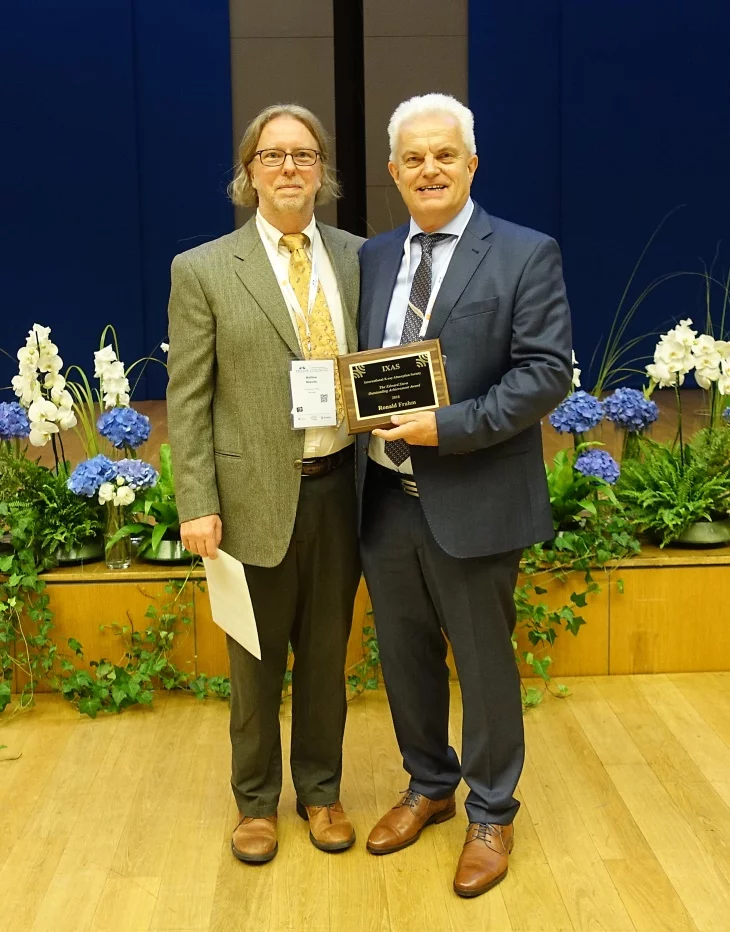The highest award of the international X-ray absorption spectroscopy (IXAS) society, the Edward Stern Outstanding Achievement Award, was presented to Prof. Ronald Frahm during the tri-annual IXAS meeting in Kraków , Poland in July 2018. Ronald Frahm is professor in experimental physics at the University of Wuppertal (Germany). He is also a long-term collaborator and expert user of the SuperXAS beamline at the Swiss Light Source. Professor Frahm received the Stern outstanding achievement award for his development of the quick extended x-ray absorption fine structure spectroscopy (QEXAFS). State of the art QEXAFS setups as e.g. the one installed at the SuperXAS beamline at SLS, allow full EXAFS scans in a few milli seconds and offer unprecedented routes to time-resolved and in-operando investigations.
Ronald Frahm started the development of a continuous scanning double crystal monochromator back in 1987 at the Hasylab synchrotron facility in Hamburg (1). The continuous developments in his group lead to the current state-of-the-art system, which was installed by his group at the SuperXAS beamline in February 2015. It consists of a fast scanning crystal monochromator allowing continuous scanning through the energy axis, gridded ionization chambers with short response times on the microsecond time scale, and a fast data acquisition system (2). “The QEXAFS approach is a real game-changer for our energy research at SLS” says Maarten Nachtegaal, group leader of the SuperXAS beamline and long-term collaborator of Prof. Frahm. The unique setup allows the researchers to follow chemical reactions in real time and has already lead to insights in why NOx reduction from diesel fueled cars over a state-of-the-art copper-zeolite catalyst does not work well at low temperature (3) or to show the structure sensitivity of a nickel catalyst in the hydrogenation of CO2 (4). “We have a lot of interest in this setup from the science community and we are looking forward to continuous developments of this technique here at SLS” Nachtegaal added.
1. R. Frahm. Quick scanning EXAFS: First experiments. Nucl. Instrum. Methods Phys. Res. A 270, 578 (1988)
2. O. Müller, M. Nachtegaal, J. Just, D. Lützenkirchen-Hecht, R. Frahm. Quick-EXAFS setup at the SuperXAS beamline for in situ X-ray absorption spectroscopy with 10 ms time resolution. J. Synchrotron Rad. 23, 260 (2016).
3. A. Marberger, A.W. Petrov, M. Elsener, O. Kröcher, M. Nachtegaal, D. Ferri. Time-resolved copper speciation during selective catalytic reduction of NO on Cu-SSZ-13. Nature Catalysis 1, 221 (2018).
4. C. Vogt, E. Groeneveld, G. Kamsma, M. Nachtegaal, L. Lu, C.J. Kiely, P.H. Berben, F. Meirer, B.M. Weckhuysen. Unravelling structure sensitivity in CO2 hydrogenation over nickel. Nature Catalysis 1, 127 (2018).
